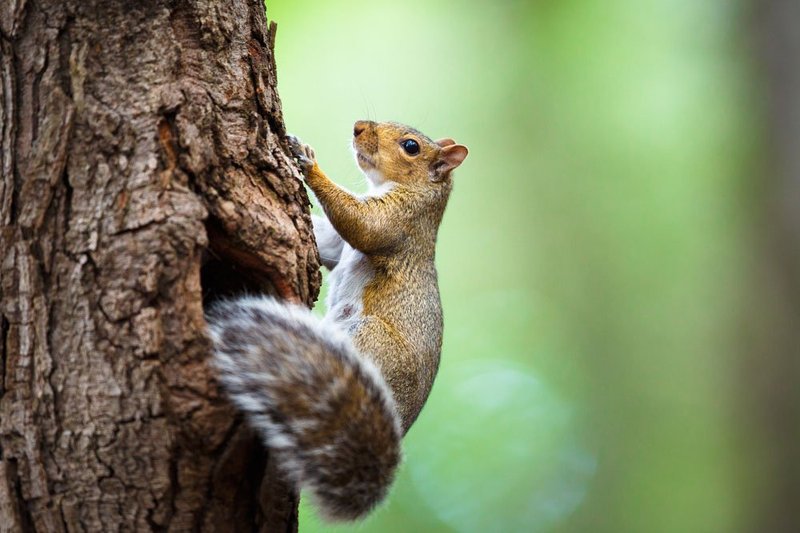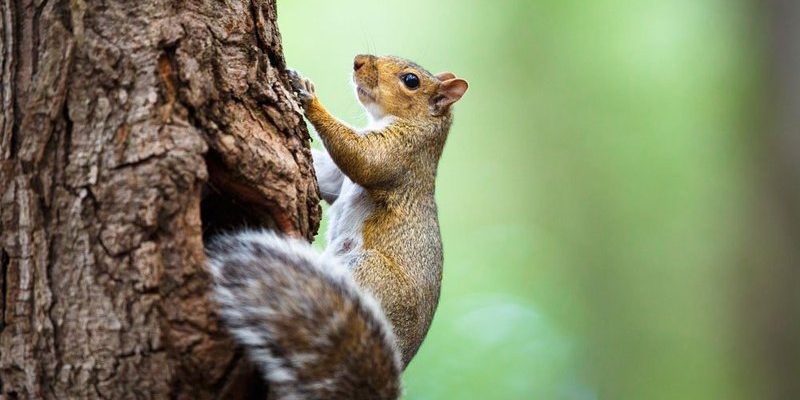
Imagine for a moment that you’re on a cozy park bench, sipping coffee while you watch these furry creatures. You might be surprised to learn about their incredible intelligence, social behavior, and adaptability to various environments. So, let’s dive into the world of tree squirrels and uncover ten fascinating facts that highlight just how special these little creatures truly are.
1. There Are Over 200 Species of Tree Squirrels
You might be surprised to know that tree squirrels are not just a single type of animal. In fact, there are more than 200 species of tree squirrels around the world! These include the eastern gray squirrel, the red squirrel, and the fox squirrel, among others. Each species has distinct features, habitats, and behaviors that help them thrive in diverse environments.
For instance, the eastern gray squirrel is commonly found in urban areas across North America, often raiding bird feeders and darting across roads. In contrast, the red squirrel is known for its smaller size and preference for coniferous forests. Understanding these differences helps us appreciate the adaptability and survival strategies of tree squirrels in varying landscapes.
2. They Have an Impressive Memory
Here’s the thing: tree squirrels are natural hoarders. They gather nuts and seeds during the fall and hide them away to eat during the winter months. But what’s really fascinating is their memory. Squirrels use a combination of spatial memory and smell to locate their hidden food. Studies have shown that they can remember the locations of thousands of food caches, retrieving them when needed.
Imagine if you could remember where you stored every snack you ever hid! That’s essentially what squirrels do, and it’s crucial for their survival. This impressive memory also helps them navigate their environment efficiently, allowing them to thrive even in harsh conditions.
3. Their Teeth Never Stop Growing
Did you know that a squirrel’s teeth are continuously growing? This means they need to gnaw on various materials to keep their teeth from becoming too long. Tree squirrels love to chew on nuts, wood, and even bark. This constant gnawing not only helps maintain their dental health but also contributes to the ecosystem by helping break down dead trees and fallen branches.
If you ever spot a squirrel munching away at a nut, just think about their ongoing dental adventure. It’s pretty fascinating how such a simple action plays a role in both their health and the environment.
4. They Communicate in Unique Ways
You might be wondering how squirrels communicate with one another. Believe it or not, tree squirrels have a variety of vocalizations and body language to convey messages. They can create different sounds to warn each other of predators, express happiness, or even assert dominance over a territory.
For example, a high-pitched alarm call can signal danger, while a lower sound might indicate contentment. Additionally, they use tail movements as a visual cue, signaling their intentions to other squirrels. Understanding their communication can help you see just how social these critters can be, forming intricate relationships in their communities.
5. Tree Squirrels Are Excellent Climbers
You’ve probably seen a squirrel scaling a tree with ease, but what makes them such skilled climbers? Their anatomy plays a huge role. Tree squirrels have sharp claws and powerful limbs, which allow them to grasp tree bark and leap from branch to branch. Their tails also serve as a balancing tool, helping them navigate high up in the tree canopy.
This remarkable climbing ability not only helps them escape predators but also allows them to find food and build nests in tree hollows or leaf nests. Imagine zipping from branch to branch without a care in the world. Squirrels essentially live in a three-dimensional playground!
6. They Have a Varied Diet
Here’s some food for thought—tree squirrels are omnivores, which means they eat both plants and animals. Their diet mainly consists of nuts, seeds, fruits, and occasionally insects or bird eggs. They’re particularly fond of acorns, walnuts, and hazelnuts, which provide essential nutrients for their energy needs.
While foraging, squirrels can be quite picky, choosing only the ripest or most nutritious options. This varied diet not only ensures they get the nutrition they need but also plays an important role in forest regeneration by helping disperse seeds and nuts.
7. They Are Not Just Found in Forests
While you might picture tree squirrels living in dense forests, these clever creatures adapt well to various environments, including urban and suburban areas. Parks, gardens, and even your backyard can be home to tree squirrels. Their ability to thrive in different habitats demonstrates their resourcefulness.
In urban areas, they often rely on human-provided food sources, like bird feeders or dropped snacks. This adaptability makes them one of the most successful mammals in both natural and human-influenced environments, showcasing their intelligence and survival skills.
8. Squirrels Play a Key Role in Ecosystems
You might not think about it, but tree squirrels play a significant role in maintaining the health of ecosystems. By burying nuts and seeds, they inadvertently contribute to forest growth. Some of these hidden treasures grow into new trees, which can change the landscape over time.
Furthermore, their activity helps aerate the soil as they dig for food, promoting a healthier environment for the plants and animals around them. So next time you see a squirrel, remember that it’s not just a cute critter; it’s an important player in the ecological game!
9. They Have a Unique Grooming Ritual
Grooming isn’t just for looks in the animal kingdom. For tree squirrels, grooming is essential for maintaining their fur and health. They use their front paws to clean their coats, removing dirt and parasites. This ritual helps keep their fur insulated, especially in colder months.
Additionally, grooming is a bonding activity among squirrels. You may notice two squirrels grooming each other, which strengthens their social bonds and reinforces relationships within their community. It’s a sweet reminder of how even small creatures like squirrels have complex social interactions.
10. They Can Jump Up to 10 Times Their Body Length
Finally, let’s talk about one of the most impressive feats of tree squirrels—their incredible jumping ability. These agile creatures can leap distances up to 10 times their body length! That’s like you jumping across the entire width of a basketball court in one bound.
This skill is crucial for navigating trees, escaping predators, and reaching food sources. It also illustrates their physical adaptations, like strong leg muscles and flexible spines, making them master acrobats of the canopy.
In conclusion, tree squirrels are more than just playful critters chasing each other around trees. Their fascinating behaviors, adaptability, and role in the ecosystem make them remarkable creatures worthy of our admiration. So the next time you spot a tree squirrel, take a moment to appreciate all the incredible things happening in that tiny, furry package. After all, there’s a whole world of wonder in nature, just waiting to be explored!

